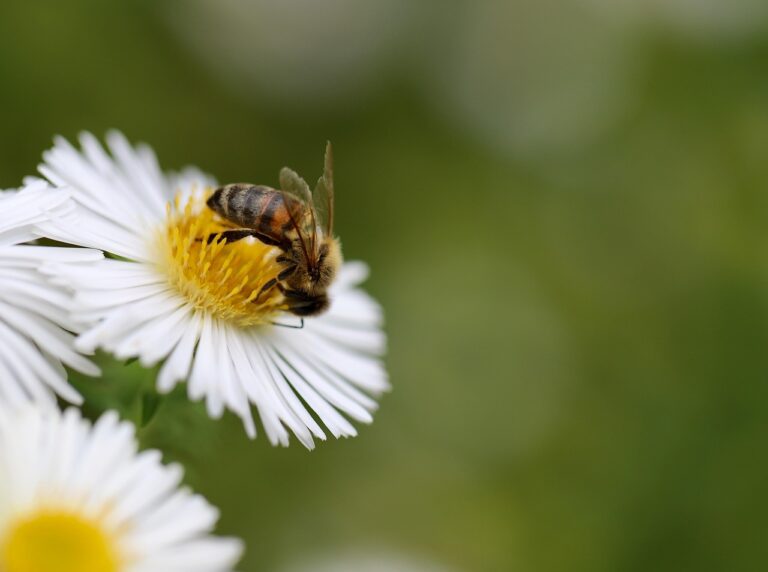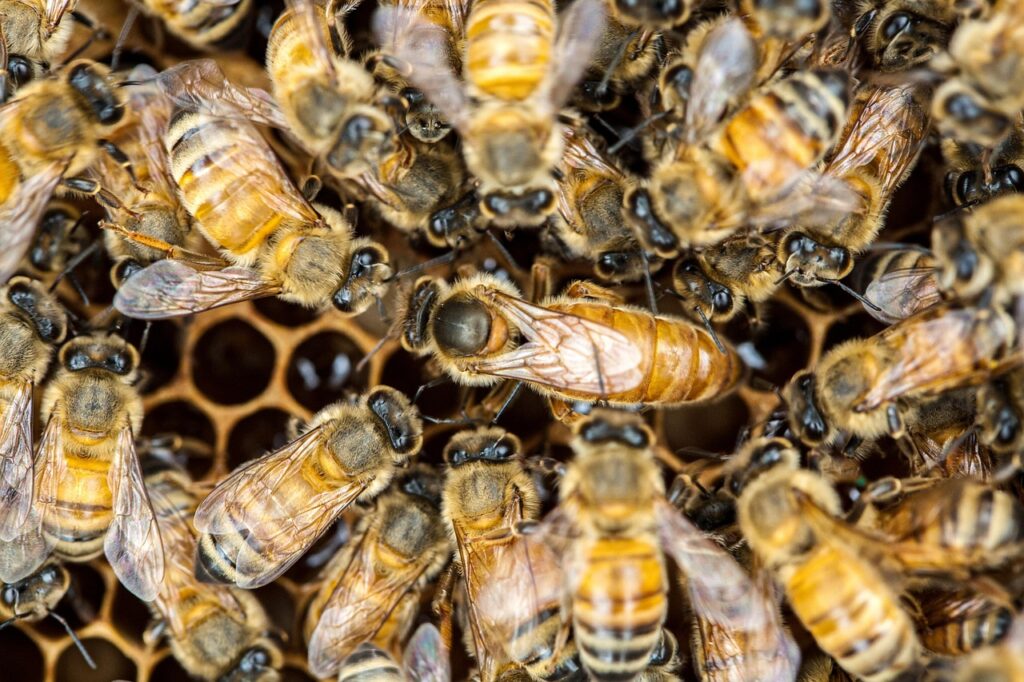Foraging is fundamental to the overall health and survival of a bee colony
Providing the essential resources—nectar, pollen, water, and propolis—needed for nutrition, brood development, immune function, and winter survival.
The quality, abundance, and diversity of forage directly determine colony strength, productivity, and resilience to stress and disease[1][2][3].
Key roles foraging plays in bee colony health:
• Nutritional Support: Foraging bees collect nectar (main energy source) and pollen (protein source) from a variety of flowers. Sufficient nectar is vital for making honey, which fuels colony activity and is critical for overwintering. Pollen supplies proteins and trace nutrients essential for larval growth and overall bee health[3][2][4].
• Brood Rearing: Abundant and diverse pollen is crucial for raising healthy brood (developing bees). Colonies with access to high-quality forage have more brood, bigger populations, and improved survival probabilities, while poor forage leads to weaker colonies[1][5][6].
• Colony Growth and Population Turnover: Foraging enables the colony to support the queen in laying thousands of eggs daily during peak season; nurse bees require constant pollen and nectar inputs to raise this brood[3].
• Immunity and Stress Resistance: Adequate and varied forage enhances physiological functions (such as the production of vitellogenin, a key protein for immune response and lifespan extension), improving bees’ resistance to disease, oxidative stress, and environmental toxins[1][5].
• Thermoregulation and Hive Maintenance: Foraged water is critical for maintaining appropriate hive temperature and humidity, especially in hot conditions; propolis, also gathered during field foraging, is used for hive hygiene and structural integrity[2].
• Adaptation and Environmental Resilience: Colonies adjust foraging behavior according to environmental changes, compensating for lower floral diversity by increasing foraging range—but at the cost of energy and individual bee lifespan[6][4].
The overall efficiency and health of the colony are closely linked to the availability and diversity of floral resources within flight range; poor or limited forage leads to decreased colony weight, smaller populations, and higher mortality, particularly over winter.
Managed landscapes that provide rich, diverse forage greatly enhance bee health outcomes and colony survival[1][5][6].
In summary, foraging underpins all facets of colony health, growth, and survival—making the quality and abundance of available forage resources one of the most important determinants of a thriving bee colony[3][2][1][5].
⁂
1. https://www.nature.com/articles/s41598-019-41281-3
2. https://www.perfectbee.com/learn-about-bees/the-life-of-bees/why-do-bees-forage
3. https://ucanr.edu/blog/bug-squad/article/foraging-force-honey-bee-colony
4. https://en.wikipedia.org/wiki/Forage_(honeybee)
5. https://www.farmprogress.com/forage/type-of-forage-matters-for-honey-bee-health
6. https://journals.plos.org/plosone/article?id=10.1371%2Fjournal.pone.0183716



